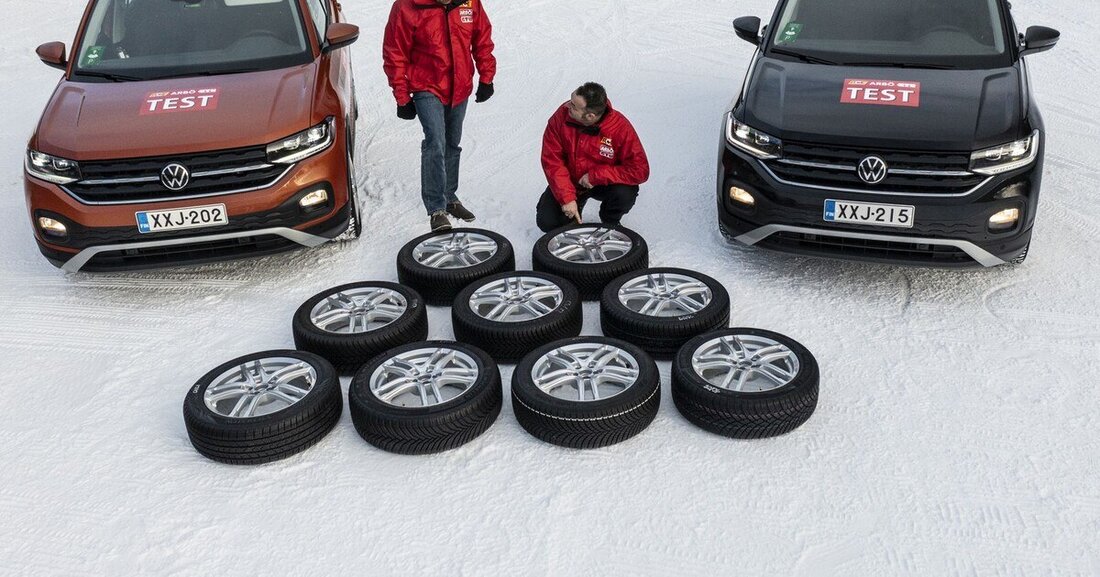All-season tires in the Arbö test
The Arbö tested all-season tires for compact cars, small cars and compact SUVs under typical driving conditions.

All-season tires in the Arbö test
The Arbö motorists' club, together with its German partners ACE and the Society for Technical Monitoring GTÜ, sent nine all-rounders of size 205/55R 17 through a thorough test scenario in both winter and summer. What speaks in favor of all-weather tires is the elimination of the annoying tire changes in spring and autumn as well as storage and the associated costs. The all-weather tires should not show any weaknesses when driving on snowy, rainy or dry roads.
The snow tests in Finland showed how much winter tires are actually in all-weather tires - or not. The tires from Michelin, Nokian and Continental particularly stand out here. They deliver decent results in every winter discipline: The Michelin offers the shortest braking distance at 16.5 meters from 38 km/h, closely followed by the Nokian (16.6 meters) and the Continental (17.0 meters). They all also have a good grip in the snow, so they have good lateral support. Their steering behavior and controllability are also confident. This significantly reduces both oversteer and understeer when cornering. The Bridgestone comes last on snowy roads. It has by far the longest braking distance (19.0 meters) and shows serious shortcomings in terms of subjective handling: imprecise overall, weak cornering, and the test driver has to fight against the pronounced understeer when accelerating.
The Bridgestone shows a completely different result on wet roads: when braking from 80 km/h, it shows the best performance at 27.9 meters and is therefore close to the summer tire reference (27.4 meters). This is followed by Vredestein (28.2 meters) and Continental (29.5 meters). In this discipline, the Bridgestone delivers the best performance in contrast to the winter test. In complete contrast to the Toyo, which is weaker than the Berlin when it comes to aquaplaning and handling: They exhibit less precise steering behavior than the rest of the test field, drive much more unsteadily and tend to understeer when accelerating.
In the dry tests, the test tires are generally closer together. When braking from 80 km/h, the Michelin showed the shortest braking distance (24.4 meters) and is also impressive in terms of handling. This way he can secure victory in the points category ahead of the Bridgestone. Most tires offer good cornering stability on dry roads, precise steering behavior and are easy to control. Only the tires from the Berlin and Cooper brands are weakening a little and still have some catching up to do.
“There is no perfect all-season tire yet, but there are definitely good models that are suitable for average Central European weather conditions,” says Erich Groiss, technical coordinator at Arbö. The Michelin Crossclimate2 mastered the tests best and became the winner. It showed no serious weaknesses and was confident, balanced and easy to drive in snow, wet and dry conditions. The Continental AllSeasonContact and the Nokian Seasonproof come in second and third place. Although the Bridgestone Weather Control had the wet conditions under control best and performed well on dry roads, it was the weakest in winter. Therefore it only gets a “conditionally recommended” rating. According to the test team, it is not recommended for proper winter use. Overall, the tires from Cooper and Berlin are also not outstanding and only achieve a “conditionally recommended” rating. The loser in the test is the Toyo Celsius. It showed too many dangers, especially when handling wet, and was the only tire in the test to receive a “not recommended” rating.

 Suche
Suche
 Mein Konto
Mein Konto